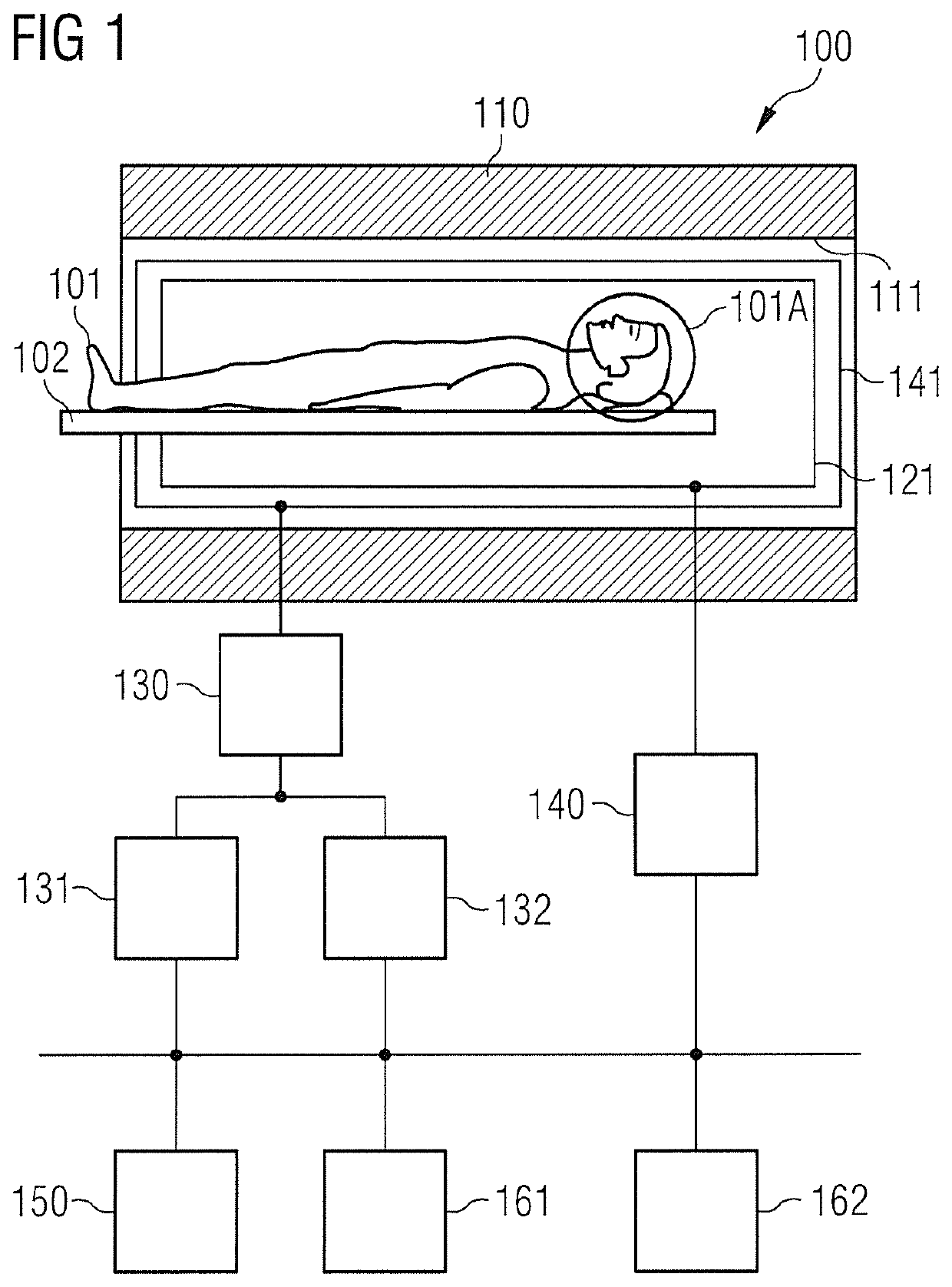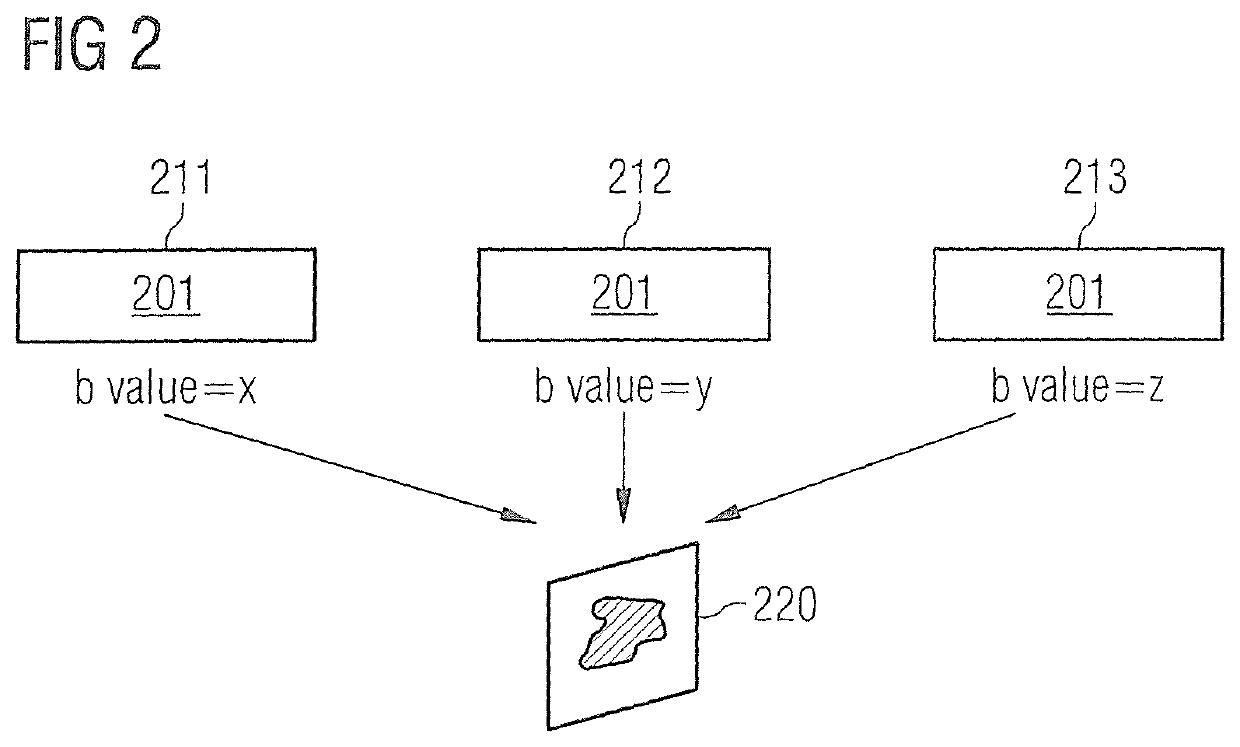Method and apparatus for diffusion-weighted magnetic resonance imaging
a magnetic resonance imaging and diffusion-weighted technology, applied in the field of methods and apparatus for diffusion-weighted magnetic resonance imaging, can solve the problems of difficult to follow the technique as per meier c., phase errors, etc., and achieve the effect of improving diffusion-weighted mr imaging techniques and reducing or avoiding phase errors
- Summary
- Abstract
- Description
- Claims
- Application Information
AI Technical Summary
Benefits of technology
Problems solved by technology
Method used
Image
Examples
Embodiment Construction
[0068]The present invention is described hereinafter using preferred embodiments and with reference to the drawing. In the figures, the same reference signs denote elements that are identical or similar. The figures are schematic representations of various embodiments of the invention. Elements shown in the figures are not necessarily true to scale. It is the case, rather, that the various elements depicted in the figures are reproduced in such a way that their function and general purpose is comprehensible to a person skilled in the art. Combinations and couplings between functional units and elements depicted in the figures can also be implemented as an indirect combination or coupling. A combination or coupling can be implemented in a wired or wireless manner. Functional units can be implemented as hardware, software or as a combination of hardware and software.
[0069]Hereinafter, techniques are described that make it possible to reduce negative effects due to concomitant field te...
PUM
 Login to View More
Login to View More Abstract
Description
Claims
Application Information
 Login to View More
Login to View More - R&D
- Intellectual Property
- Life Sciences
- Materials
- Tech Scout
- Unparalleled Data Quality
- Higher Quality Content
- 60% Fewer Hallucinations
Browse by: Latest US Patents, China's latest patents, Technical Efficacy Thesaurus, Application Domain, Technology Topic, Popular Technical Reports.
© 2025 PatSnap. All rights reserved.Legal|Privacy policy|Modern Slavery Act Transparency Statement|Sitemap|About US| Contact US: help@patsnap.com



